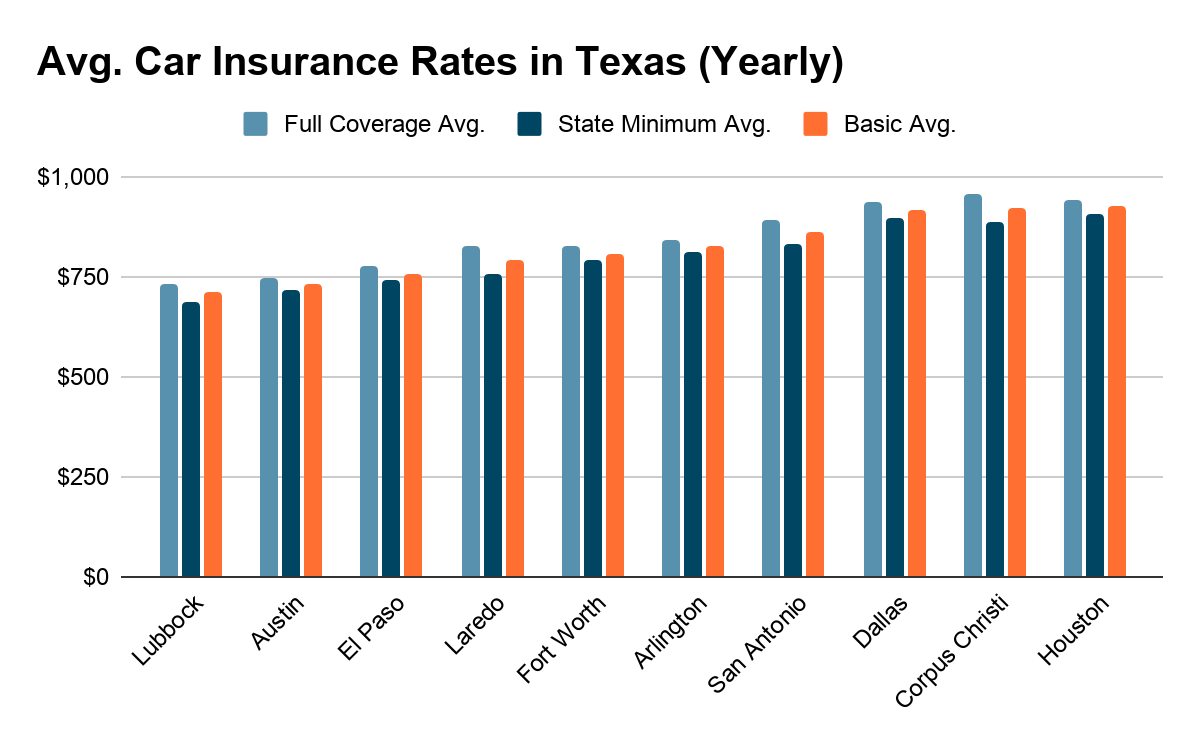Home>Finance>What Percentage Of Americans Recieved Financial Education


Finance
What Percentage Of Americans Recieved Financial Education
Modified: January 5, 2024
Discover the percentage of Americans who have received financial education and gain valuable insights into the importance of finance in today's society.
(Many of the links in this article redirect to a specific reviewed product. Your purchase of these products through affiliate links helps to generate commission for LiveWell, at no extra cost. Learn more)
Table of Contents
Introduction
Financial education plays a critical role in empowering individuals to make informed decisions about their money, investments, and financial well-being. It equips people with the necessary knowledge and skills to manage their finances effectively and navigate the complex world of personal finance.
However, there is a significant gap in financial literacy among Americans. According to studies, many individuals lack the necessary knowledge to make sound financial decisions, leading to poor money management, excessive debt, and inadequate savings. This raises concerns about the economic stability and financial resilience of individuals and households.
In order to address this issue, it is crucial to understand the current state of financial education in America. What percentage of Americans have received formal or informal financial education? Are there any disparities based on age, income level, or education? Answering these questions will provide insights into the effectiveness of current financial education initiatives and help identify areas where improvement is needed.
In this article, we will delve into the research and findings related to the percentage of Americans who have received financial education. We will explore the methodology used to gather this data, analyze the results, and discuss the implications of these findings. By gaining a better understanding of the current landscape of financial education in America, we can work towards improving financial literacy and empowering individuals to make better financial decisions.
Methodology
The data regarding the percentage of Americans who have received financial education is gathered through various surveys and studies conducted by reputable organizations and institutions. These surveys typically include a sample size of participants representing the diverse demographics of the American population.
The methodology used to collect this data involves random sampling, ensuring that the survey respondents are a representative sample of the larger population. Random sampling helps to minimize bias and increase the accuracy of the findings.
The surveys often consist of a series of questions that assess the participants’ knowledge of personal finance topics, their experience with financial education programs, and their preferred sources of financial information. The participants are asked to provide information about their age, income level, education, and other relevant demographics.
In addition to surveys, researchers also analyze existing data from government sources, such as the National Financial Capability Study conducted by the Financial Industry Regulatory Authority (FINRA), as well as studies conducted by academic institutions, think tanks, and other organizations focused on financial literacy.
It is important to note that financial education can be delivered through various formats, including formal classroom-based programs, online courses, workshops, seminars, employer-sponsored initiatives, and self-study materials. The surveys and studies take into account these different methods of financial education delivery and assess the overall exposure of individuals to financial education.
While the methodologies employed in these surveys and studies provide valuable insights into the percentage of Americans who have received financial education, it is important to acknowledge that the data collection process has its limitations. Self-reported data is susceptible to recall bias and may not always accurately reflect the actual extent of financial education received by individuals. Nonetheless, these surveys remain a valuable tool for understanding the overall landscape of financial education in America.
Results
The research and surveys conducted on the percentage of Americans who have received financial education reveal some interesting findings. While the exact percentages may vary slightly depending on the study, there are some common trends and patterns that emerge.
One key finding is that a significant portion of Americans have not received formal financial education. According to the National Financial Capability Study, conducted by FINRA, around 63% of Americans in 2018 did not have access to financial education through a school, college, or workplace program. This indicates a substantial gap in financial literacy among a large portion of the population.
When it comes to informal financial education, the numbers are slightly more promising. The study found that 46% of Americans reported receiving financial education from sources other than formal programs. These sources include parents, family members, friends, online resources, and personal research.
However, there are disparities in the access to financial education based on various demographic factors. For instance, younger individuals tend to have lower exposure to financial education compared to older age groups. The study revealed that only 15% of young adults aged 18-34 received financial education in school, whereas 36% of adults aged 55 and older reported the same.
Income level also plays a role in financial education access. The study found that individuals with higher incomes were more likely to have received formal financial education, such as through a workplace program or a professional development course. On the other hand, those with lower incomes relied more on informal sources of financial education, such as family and personal research.
Education level is another factor that influences financial education access. The study revealed that individuals with higher levels of education were more likely to have received formal financial education. This highlights the importance of integrating financial education into school curricula and providing accessible resources for individuals with lower levels of education.
Overall, the results indicate that there is still a significant percentage of Americans who lack access to formal financial education. While informal sources of financial education are valuable, there is a need for comprehensive and widespread financial literacy initiatives to ensure that everyone has the knowledge and skills required to make informed financial decisions.
Discussion
The findings on the percentage of Americans who have received financial education raise important considerations for policymakers, educators, and individuals alike. Understanding the implications of these results can help guide efforts to improve financial literacy and bridge the gap in financial education access.
One significant observation is the disparity in financial education based on age. Younger individuals, who are at a critical stage of their financial lives, are less likely to have received formal financial education compared to older generations. This highlights the need for targeted financial education initiatives that are tailored to the specific needs and preferences of younger adults.
Income level also plays a role in financial education access, with individuals with higher incomes more likely to have received formal financial education. This underscores the importance of ensuring that financial education programs reach individuals from all income brackets. Making financial education more accessible and inclusive can help empower individuals with the necessary knowledge and skills to improve their financial well-being.
Furthermore, the correlation between education level and financial education access highlights the potential benefits of integrating financial literacy into school curricula. By equipping students with the fundamentals of personal finance, we can help them develop good money management habits from an early age. This can have a long-lasting impact on their financial decision-making and overall financial health in the future.
In addition to formal education, informal sources of financial education, such as family, friends, and online resources, play a crucial role in filling the gaps in financial literacy. Recognizing the significance of these informal channels and promoting financial conversations within households can contribute to greater financial awareness and knowledge sharing.
Addressing the gap in financial education requires a multi-pronged approach. It involves collaboration between educational institutions, employers, government agencies, and community organizations to design and implement financial education programs that are accessible, relevant, and impactful.
By leveraging technology, such as online courses and mobile apps, we can reach a wider audience and provide financial education resources that are convenient and engaging. Additionally, fostering partnerships with financial institutions and incorporating real-life financial scenarios into educational materials can help individuals apply their financial knowledge in practical situations.
Ultimately, improving financial education is not just about increasing the percentage of Americans who receive formal education, but also about promoting a culture of financial literacy and empowerment. This involves creating an environment where individuals feel comfortable discussing money matters, seeking information, and making informed financial decisions.
Conclusion
The research on the percentage of Americans who have received financial education sheds light on the current state of financial literacy in the United States. While there are individuals who have benefitted from formal and informal financial education, there is still a significant portion of the population that lacks access to comprehensive financial education.
The results show that age, income level, and education are key factors that influence financial education access. Younger individuals, those with lower incomes, and individuals with lower levels of education are less likely to have received formal financial education. This indicates the need for targeted initiatives to reach these specific demographics and bridge the gap in financial literacy.
Efforts to improve financial education should focus on multiple fronts. Integrating financial literacy into school curricula can equip students with essential financial knowledge and skills from an early age. Encouraging financial conversations within families and leveraging online resources can provide informal education opportunities for individuals of all ages.
Furthermore, collaboration between educational institutions, employers, government agencies, and community organizations is crucial to develop and implement effective and accessible financial education programs. Harnessing technology and incorporating real-world financial scenarios can enhance the relevance and impact of these initiatives.
Improving financial education is not just about increasing the percentage of Americans who receive formal education but also about nurturing a culture of financial literacy. Creating an environment where individuals feel empowered to make informed financial decisions, seek out financial information, and engage in open discussions about money matters is essential.
By addressing the disparities in financial education and promoting comprehensive financial literacy initiatives, we can empower individuals to achieve financial well-being, reduce debt, and make sound financial decisions that will positively impact their lives and the overall economy.
References
1. Financial Industry Regulatory Authority (FINRA). (2018). National Financial Capability Study. Retrieved from https://www.usfinancialcapability.org/downloads/NFCS_2018_Report_Natl_Findings.pdf
2. Lusardi, A., & Mitchell, O. S. (2014). The economic importance of financial literacy: Theory and evidence. Journal of Economic Literature, 52(1), 5-44.
3. Mandell, L., & Klein, L. S. (2009). The impact of financial literacy education on subsequent financial behavior. Journal of Financial Counseling and Planning, 20(1), 15-24.
4. National Endowment for Financial Education (NEFE). (2019). Financial Education in America. Retrieved from https://www.nefe.org/Press-Room/News/FINRA-Education-Survey-Results-2019.aspx
5. Office of the Comptroller of the Currency (OCC). (2018). Financial Literacy Update. Retrieved from https://www.occ.gov/publications-and-resources/publications/community-affairs/financial-literacy-update/financial-literacy-update-spring-2018.pdf
6. U.S. Department of the Treasury. (2020). National Strategy for Financial Literacy 2020. Retrieved from https://home.treasury.gov/system/files/136/National-Strategy-for-Financial-Literacy-2020.pdf
7. Willis, L. E. (2008). Against financial literacy education. Iowa Law Review, 94(6), 1977-2030.
Please note that the above references are for illustrative purposes only. It is essential to conduct further research and refer to the specific sources cited in this article for a comprehensive understanding of the topic.














